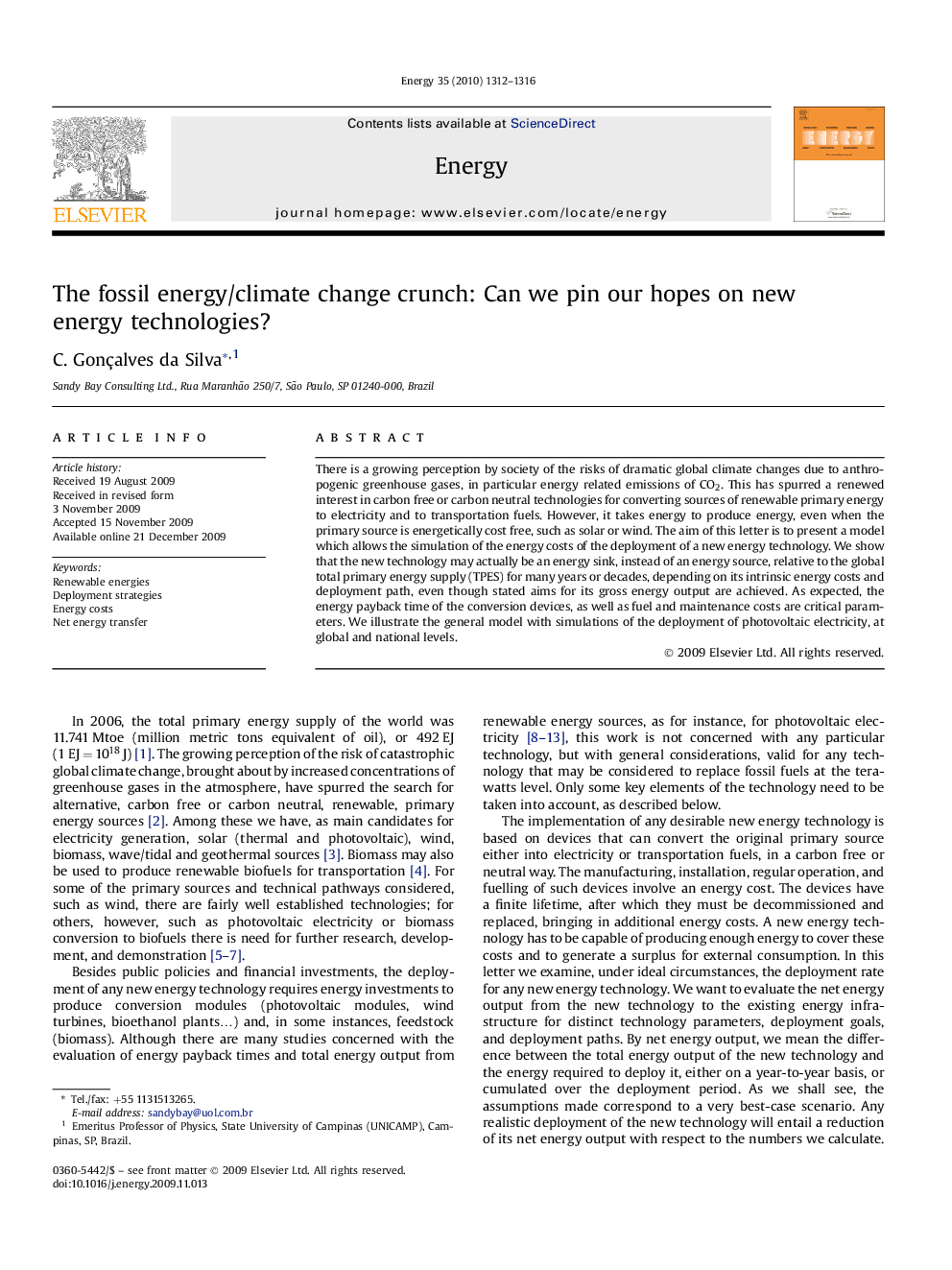| Article ID | Journal | Published Year | Pages | File Type |
|---|---|---|---|---|
| 1735356 | Energy | 2010 | 5 Pages |
There is a growing perception by society of the risks of dramatic global climate changes due to anthropogenic greenhouse gases, in particular energy related emissions of CO2. This has spurred a renewed interest in carbon free or carbon neutral technologies for converting sources of renewable primary energy to electricity and to transportation fuels. However, it takes energy to produce energy, even when the primary source is energetically cost free, such as solar or wind. The aim of this letter is to present a model which allows the simulation of the energy costs of the deployment of a new energy technology. We show that the new technology may actually be an energy sink, instead of an energy source, relative to the global total primary energy supply (TPES) for many years or decades, depending on its intrinsic energy costs and deployment path, even though stated aims for its gross energy output are achieved. As expected, the energy payback time of the conversion devices, as well as fuel and maintenance costs are critical parameters. We illustrate the general model with simulations of the deployment of photovoltaic electricity, at global and national levels.
